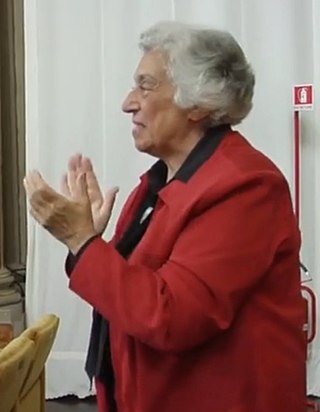In music, a quartet or quartette is an ensemble of four singers or instrumental performers or a musical composition for four voices and instruments.

The viola d'amore is a 7- or 6-stringed musical instrument with sympathetic strings used chiefly in the baroque period. It is played under the chin in the same manner as the violin.
In music, instrumentation is the particular combination of musical instruments employed in a composition, and the properties of those instruments individually. Instrumentation is sometimes used as a synonym for orchestration. This juxtaposition of the two terms was first made in 1843 by Hector Berlioz in his Grand traité d'instrumentation et d'orchestration modernes, and various attempts have since been made to differentiate them. Instrumentation is a more general term referring to an orchestrator's, composer's or arranger's selection of instruments in varying combinations, or even a choice made by the performers for a particular performance, as opposed to the narrower sense of orchestration, which is the act of scoring for orchestra a work originally written for a solo instrument or smaller group of instruments.
Arnold Atkinson Cooke was a British composer.
Anthony Gilbert was a British composer and academic, long associated with the Royal Northern College of Music. He also taught for extended periods as head of composition at the New South Wales State Conservatorium. His works, many of them for larger chamber ensembles, were published by Schott and University of York Music Press. Several of them were written for particular performers, who performed and recorded them. He wrote a memoir, published in 2021.

Donald Henry Kay AM is an Australian classical composer.
Gary Kulesha is a Canadian composer, pianist, conductor, and educator. Since 1995, he has been Composer Advisor to the Toronto Symphony Orchestra. He has been Composer-in-Residence with the Kitchener-Waterloo Symphony (1988–1992) and the Canadian Opera Company (1993–1995). He was awarded the National Arts Centre Orchestra Composer Award in 2002. He currently teaches on the music faculty at the University of Toronto.

The trumpet repertoire consists of solo literature and orchestral or, more commonly, band parts written for the trumpet. Tracings its origins to 1500 BC, the trumpet is a musical instrument with the highest register in the brass family.
Israel Sharon is an Israeli composer, pianist, arranger and conductor.

Teresa Procaccini is an Italian composer and music educator.
Richard Festinger is an American composer of contemporary classical music, pianist and educator.
Will Gay Bottje was an American composer known for his contributions to electronic music.




